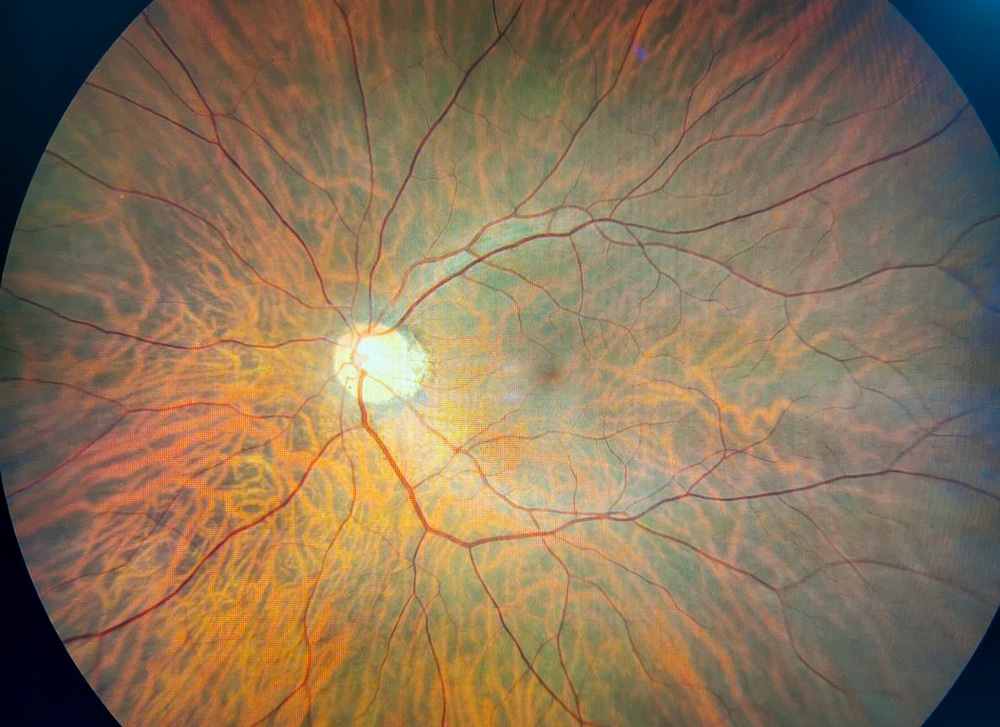Optomap
Optomap
Your retina, located in the back of your eye, is the only place in the body where blood vessels can be seen directly. This means that in addition to eye conditions, signs of other diseases such as stroke, heart disease, hypertension and diabetes, can also be seen in the retina. The optomap ultra-widefield retinal image is a unique technology that captures more than 80% of your retina in a single image while traditional imaging methods typically only show 15% of your retina at one time.
Early signs of serious conditions can show on your retina long before you notice any changes to your vision or feel pain. While eye exams generally include a look at the front of the eye to evaluate health and prescription changes, a thorough screening of the retina can verify that your eye is healthy. Patients love using Optomap as part of their eye exam – no dilation is typically needed!

What is an optomap Image?
Getting an optomap image is fast, painless and comfortable. Nothing touches your eye at any time is suitable for all ages. During the exam, you simply look into the device one eye at a time and you will see a comfortable flash of light to let you know the image of your retina has been taken. Under normal circumstances, dilation drops might not be necessary, but your eye care practitioner will decide if your pupils need to be dilated depending on the health of your eyes. The image capture takes less than a half second and they are available immediately for you to see your own retina. You see exactly what your eye care practitioner sees – even in a 3D animation.
Benefits of an Optomap
The benefits of having an optomap ultra-widefield retinal image taken are:

